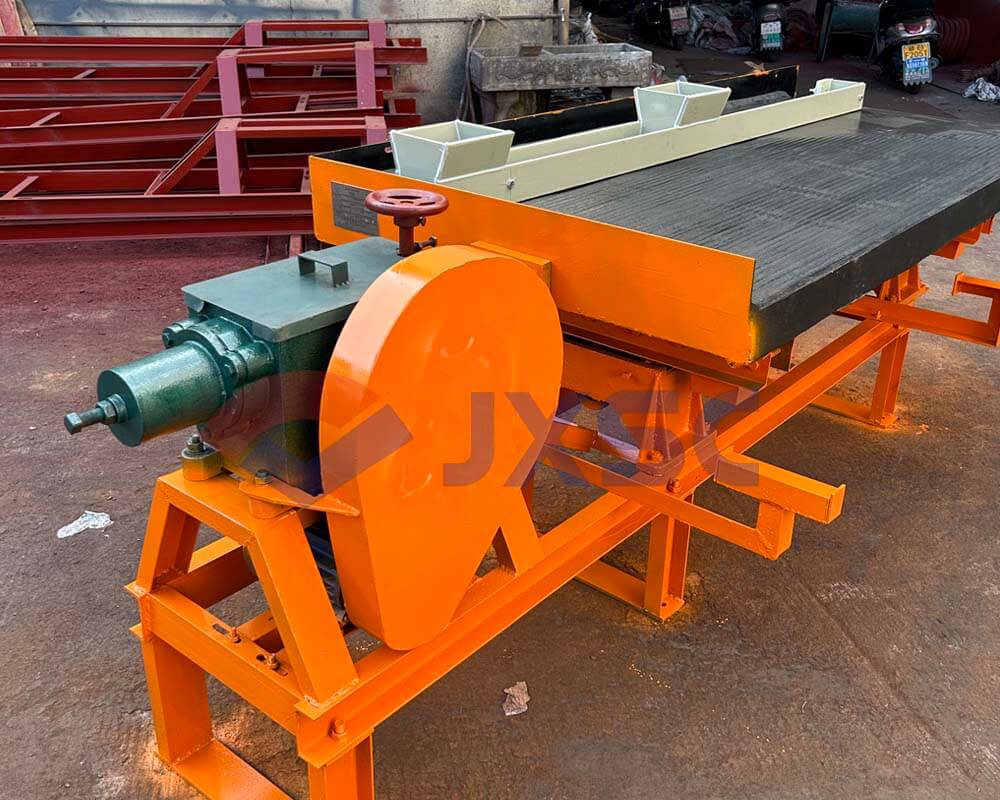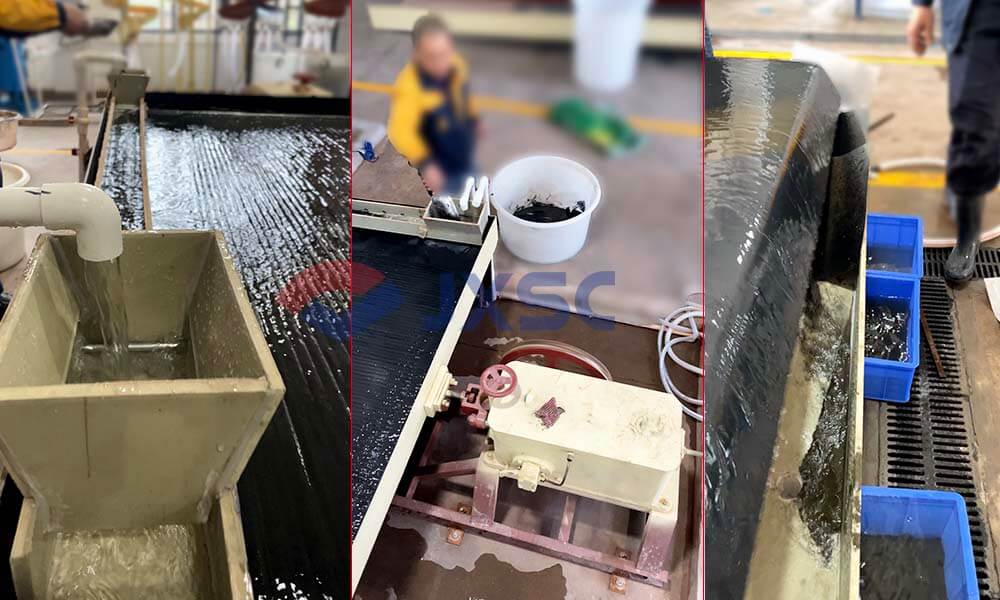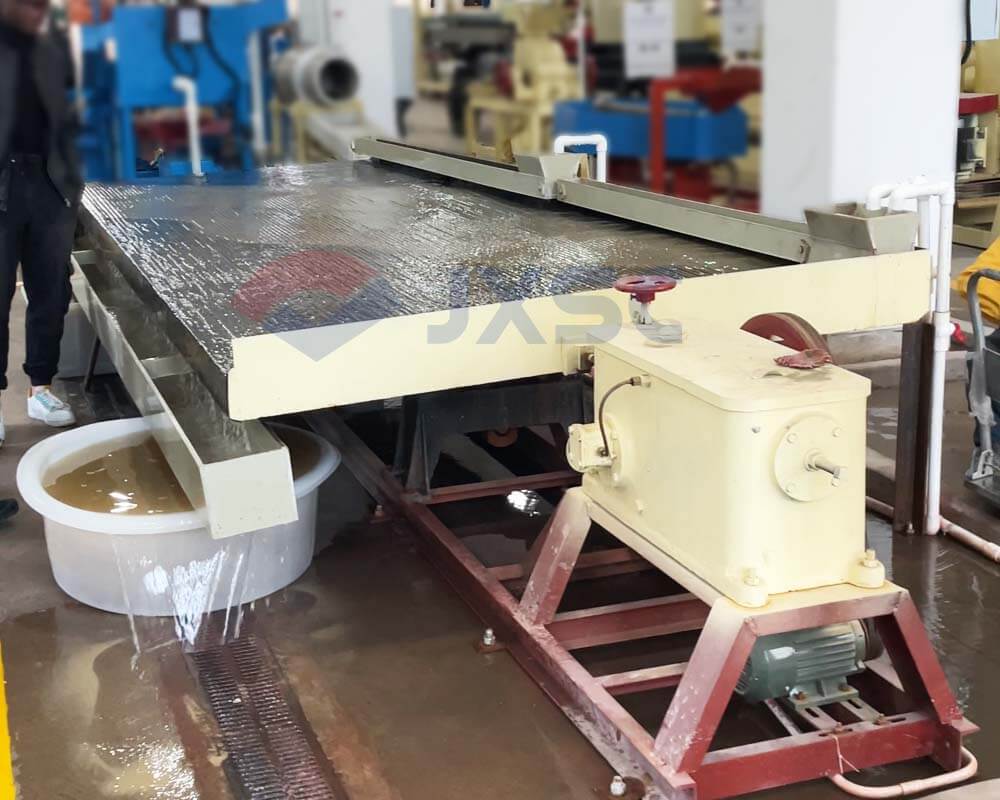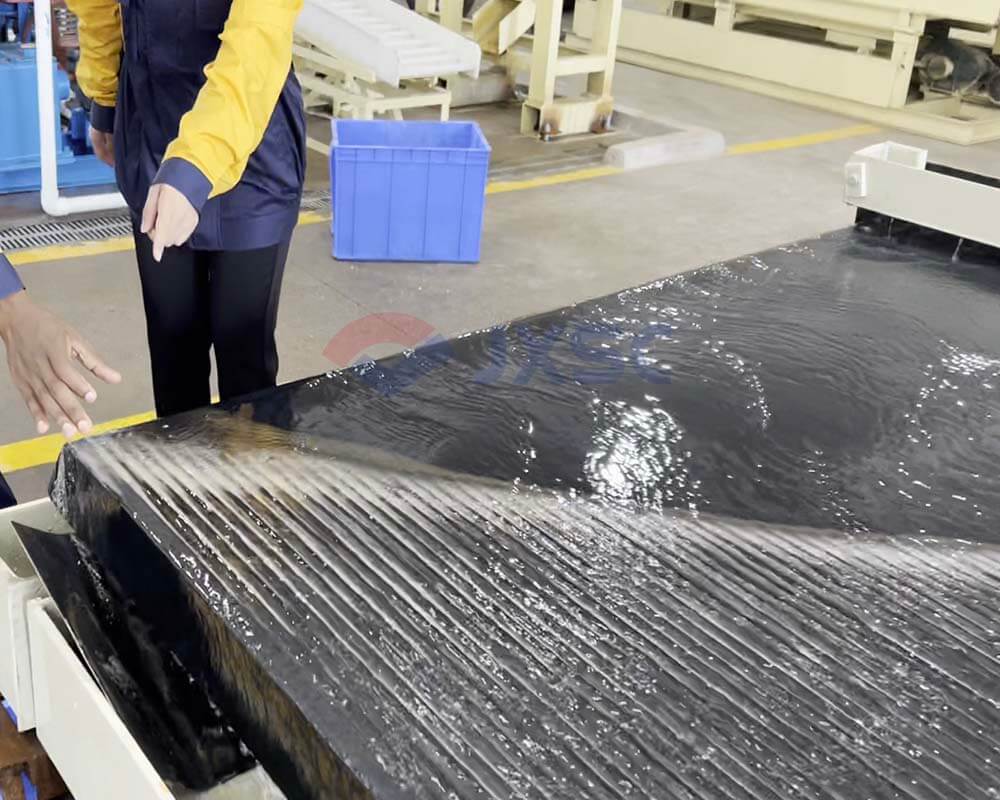How to choose a mining shaking table that can meet the experimental accuracy requirements and adapt to laboratory scenarios? As basic equipment in the fields of mineral processing, geological exploration, and material research, laboratory mining shakers use the reciprocating motion of the bed surface to separate materials according to density and particle size. They are widely used in experimental teaching in universities, process optimization in scientific research institutes and small-scale experiments in enterprises. A high-quality shaking table is not only a prerequisite for ensuring the accuracy of experimental data, but also the key to improving research efficiency. This article will provide you with a comprehensive purchase guide to ensure that the equipment you choose can meet your experimental needs and provide the best separation effect.
How can you choose the right and precise lab mining shaking table for your lab? As the core equipment for mineral separation experiments, it directly impacts data accuracy and research efficiency. JXSC will help you avoid purchase pitfalls and find the most cost-effective equipment, from needs analysis, parameter analysis, to cost considerations.
Table of Contents

What is a lab mining shaking table?
A laboratory mining shaking table is a type of experimental equipment used for ore beneficiation research and gravity separation in small-scale concentrators. Its bed size is typically smaller than that of an industrial shaker, making it suitable for indoor testing. Its beneficiation performance is essentially the same as that of a large shaking table. Compared to an industrial shaker, it offers advantages such as easy installation, a small footprint, and low power consumption. It is primarily used for separation tests of fine and micro-grained rare metals, ferrous metals, and non-ferrous metals.
Applications
- Ore beneficiation research: Optimal separation parameters (such as slope and flushing water volume) are determined through small-scale experiments to provide data support for industrial production.
- Education and research: Simulate the gravity separation process of minerals such as tungsten, tin, and gold, visually demonstrating zoning patterns.
- Small-scale production: Small-scale concentrators with limited space, with a processing capacity of 0.2-0.8 tons per hour, can directly produce concentrate and tailings.
Working Principle
Laboratory mining shaking tables use the principle of gravity separation, separating mineral particles through mechanical shaking and transverse water flow:
Bed Movement: A motor drives a crank-connecting rod mechanism, causing the bed to move asymmetrically in the longitudinal direction, loosening and stratifying the mineral particles.
Transverse Water Flow: Flushing water forms a thin layer of water flow on the inclined bed. Light minerals are moved transversely by the water flow to form tailings, while heavy minerals are moved longitudinally by the bed vibration to form concentrate.
Stratification Mechanism: Mineral particles separate and stratify within the bed bars or grooves, with heavy minerals settling to the bottom and light minerals floating to the top. These minerals are ultimately distributed in a fan-shaped pattern on the bed and discharged in separate zones.

Key components of a laboratory shaker include the shaker table, vibration mechanism, and control system. Shakers are typically equipped with precise frequency and amplitude adjustment to adapt to varying experimental conditions. The table design is also crucial, and different materials can be selected to meet the processing requirements of various mineral types. Furthermore, shakers can be integrated with other laboratory equipment to form a more comprehensive mineral processing test flow.
Must know before Buying a lab mining shaking table
1. Define Experimental Requirements
First, you need to understand the primary purpose of your experiment. Is it for basic research, process development, or mineral quality analysis? Different experimental objectives will determine the design and performance requirements of the shaking table. Furthermore, the mineral type should be considered, as different minerals’ physical properties, such as density, particle size, and shape, can affect separation performance.
(1) Processing Material Analysis:
Different material properties directly influence shaker selection. When processing metallic minerals (such as tungsten and tin), bed surface wear resistance is a key consideration. Fiberglass or stainless steel is preferred to prevent scratches caused by the hardness of the mineral particles.
- For soil or sediment samples, cross-contamination prevention is important, and a removable bed surface facilitates cleaning of residual matrix.
- For chemical raw materials (such as catalyst particles) containing acidic components, corrosion-resistant models must be selected, and the equipment surface must be Teflon-coated.
- For processing high-hardness quartz sand, a Puxu silicon carbide wear-resistant coating can extend the equipment’s service life.
(2) Processing Volume and Experimental Frequency
Thus, understanding the type of minerals you will be processing will help you select the appropriate shaker equipment. The processing volume and sample size directly impact the shaker’s specifications and capacity. For example, if a large number of samples need to be processed, the shaker’s size and vibration amplitude should be increased accordingly to ensure optimal separation. For example, for small batch experiments, a micro-shaker with a high processing capacity is suitable for university teaching or small sample research, while a mid-sized device is required for continuous experiments.
2. Laboratory Conditions
(1) Installation Space Dimensions and Load-Bearing Requirements
During installation, allow 0.5m of operating space on each side of the tabletop, 0.8m of ore feeding space at the front, and 1.0m of ore receiving space at the rear. This should prevent maintenance difficulties caused by insufficient clearance between the equipment and walls or other instruments.
Regarding load-bearing capacity, medium-sized mining shaking tables (including motors) are heavy, and the combined load increases with the addition of materials and flushing water. Therefore, ensure that the installation floor is concrete (thickness ≥ 10cm) or that steel supports are used for load distribution to prevent ground subsidence or equipment resonance caused by long-term use.
(2) Power Supply, Water Source, Ventilation, and Other Supporting Facilities
Before purchasing, confirm the laboratory’s existing power supply type and voltage to ensure compatibility with the equipment and avoid malfunctions due to power shortages. Also, confirm that the laboratory has a three-phase, five-wire power supply; a missing phase can cause the motor to burn out.
Regarding ventilation requirements for special materials: When handling sulfur-containing minerals or chemical raw materials, local exhaust hoods are required to keep dust and volatile gases below occupational exposure limits.
3. Budget and Cost Considerations
You need to set a reasonable equipment procurement budget. We recommend conducting thorough market research to understand the basic prices of different equipment and comprehensively considering your own experimental needs to determine an appropriate budget. Secondly, long-term maintenance and consumable costs are also essential considerations. Over the course of long-term use, equipment may require regular maintenance and replacement of parts due to wear and tear or other factors, which will directly impact the overall operating costs of your experiment.

Key indicators for buying lab mining shaking tables
1. Performance parameters
Model | LY1100×500 | |
Deck Size (mm) | 1100×500 | |
Stroke (mm) | 8-18 | |
Frequency (times/min) | 300-450 | |
Transverse Tile of Deck (°) | 0-10 | |
Feeding Size | Sand Deck (mm) | ≤2 |
Slime Deck (mm) | ≤0.2 | |
Feeding Density (%) | 10-30 | |
Processing Capacity | Sand Deck (t/hr) | 0.02 |
Slime Deck (t/hr) | 0.01 | |
Water Consumption (t/hr) | 0.1-0.5 | |
Motor Power (kW) | 0.55 | |
Dimensions (mm) | 1710×520×780 | |
Weight (kg) | 150 | |
2. Vibration Frequency and Amplitude
The optimal vibration frequency and amplitude for different materials on a mining shaking table can vary significantly, directly impacting separation efficiency and precision. For example, a higher frequency allows for efficient separation of small particles in a shorter time, improving separation precision. Conversely, a larger amplitude increases sedimentation velocity, thereby accelerating experimental processing. Therefore, flexible adjustment of vibration parameters is crucial to meet diverse experimental needs. Effective adjustment ensures the shaker operates optimally for different materials and meets specific experimental requirements. Therefore, when purchasing equipment, you should pay attention to the shaker’s vibration parameter adjustment mechanism to ensure appropriate adjustments for different experimental conditions, thereby improving overall experimental efficiency.
3. Material and Durability
When choosing a shaker, consider the pH value, hardness, and experimental cycle of the material. Common materials include stainless steel, aluminum alloy, and engineering plastics. Stainless steel offers excellent corrosion resistance and is suitable for handling chemically sensitive materials, but it is relatively expensive. Aluminum alloy, on the other hand, offers excellent lightweight and strength, making it suitable for most laboratory environments. Therefore, when choosing, you need to consider the characteristics of the materials that the shaker needs to handle and the durability requirements for long-term use.
Practical Tips for buying Lab Mining Shaking Tables
1. Equipment Compatibility
Pay attention to the fine-tuning accuracy of the bed’s horizontal slope (0-5°) and vertical inclination (0-15°). Prefer models with digital adjustment functions to ensure quantitative and reproducible experimental parameters. Choose an appropriate table size based on your throughput requirements. Pay attention to the bed material (wear-resistant rubber or fiberglass) to prevent surface wear from long-term erosion by slurries (especially acidic ore) and ensure it meets the requirements of ore particle size separation experiments.
2. Operational Stability
Prefer a variable-frequency motor. Check the uniformity of the bed’s reciprocating motion to avoid mechanical vibration that may affect separation results. Also, ensure that the equipment’s footprint is compatible with your laboratory space and reserve space for operation and maintenance.
3. Functional Scalability and After-Sales Service
Confirm the adjustable range of stroke and rate to accommodate the separation needs of minerals with varying densities (such as gold and iron ore). Choose a model that supports multi-parameter adjustment (such as independent control of stroke and stroke frequency) to facilitate simulation of different industrial shaker working conditions; give priority to manufacturers that provide installation and debugging guidance and supply services for wearing parts to reduce subsequent maintenance costs.

When selecting a lab mining shaking table, you need to clearly identify the material type, throughput, and accuracy requirements, assess installation space and budget, and focus on mechanical performance (amplitude/frequency adjustment, slope accuracy), material durability (316 stainless steel/reinforced fiberglass), and intelligent features (PLC control, data traceability). Contact us for customized laboratory shakers, and JXSC can also provide you with specialized mineral processing testing solutions that meet your research needs.
